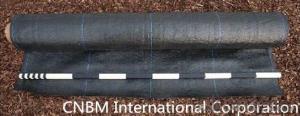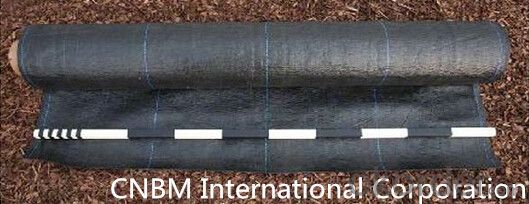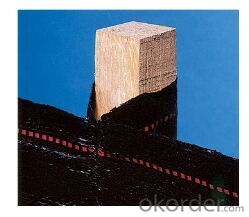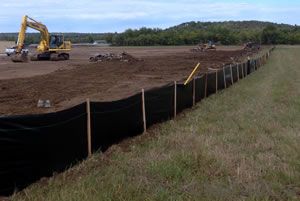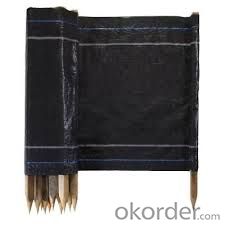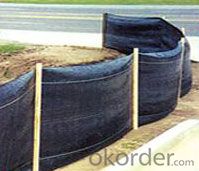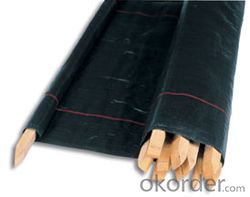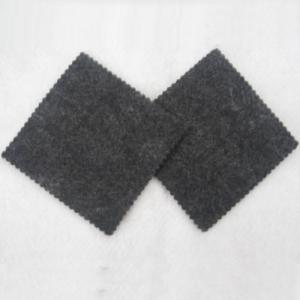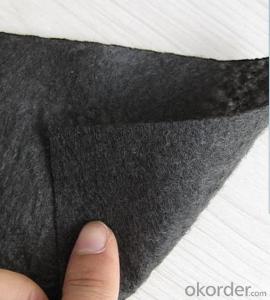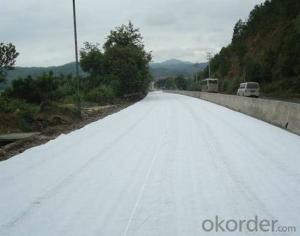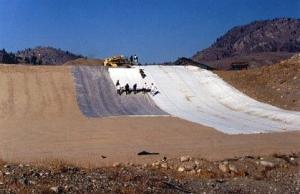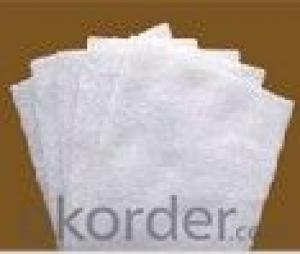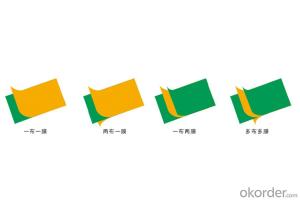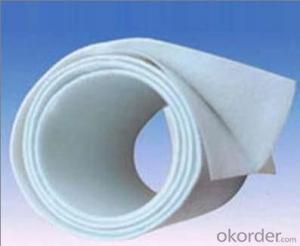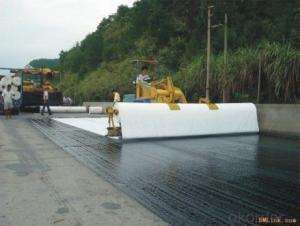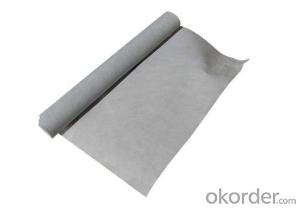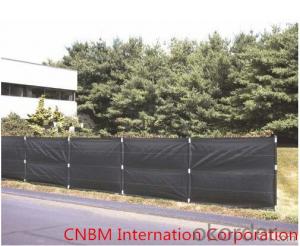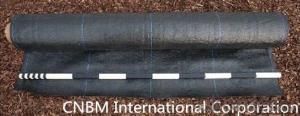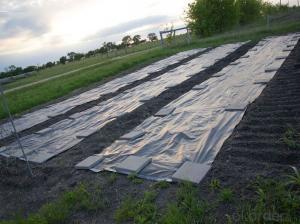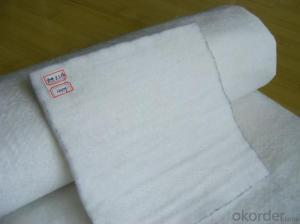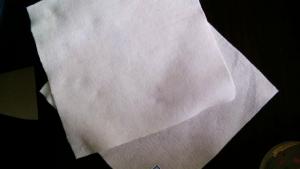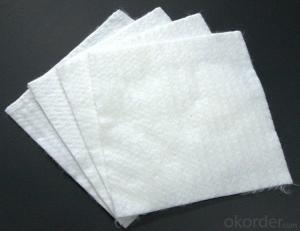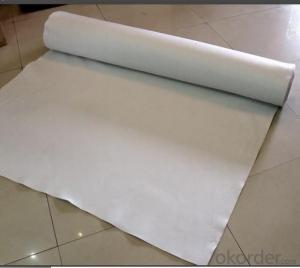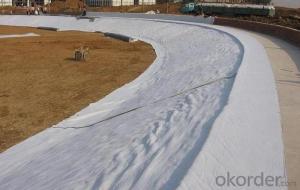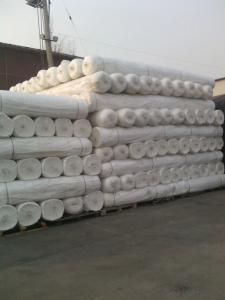M288 Class 2 Geotextile Silt Fence/Weed Barrier Fabric/Woven Fabric 100gsm
- Loading Port:
- Qingdao
- Payment Terms:
- TT OR LC
- Min Order Qty:
- 5000 roll
- Supply Capability:
- 100000 roll/month
OKorder Service Pledge
OKorder Financial Service
You Might Also Like
1.Silt Fence Description:
A silt fence, also referred to as a filter fence, is a structure composed primarily of geotechnical fabric and that is used as a form of sediment control.These temporary barriers are relatively low in cost, especially when compared to the damages they can prevent. They keep loose soils from traveling into local bodies of water and they also minimize the impact that various forms of development can have on surrounding wildlife.
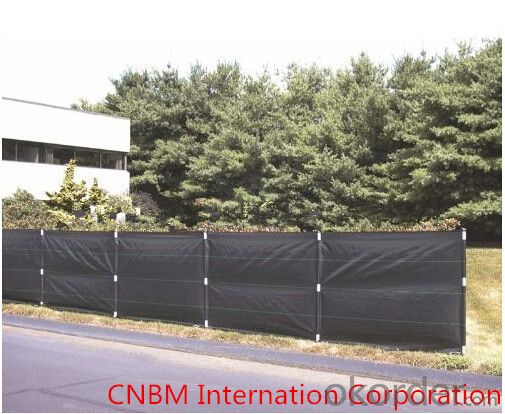
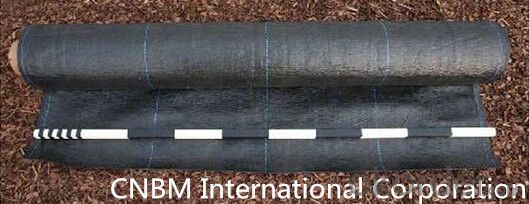
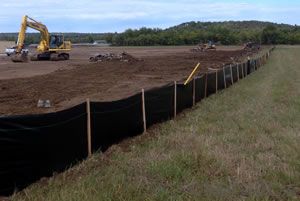
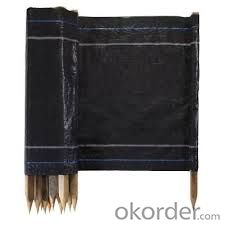
2.Weed Barrier Fabric Functions and Features:
1)Excellent weed control
2)Excellent UV resistance
3)Moisture,fertilizers,air reach plants to allow for healthy soil
4)Good water and air permeability
5)Exceptional toughness and strength
6)Durable,tear-resistant,anti-rot and anti-mildew
7)Light weight,easy to install,follows natural ground contours
8)Ideal for use in landscaped beds,under decks and walkways
9)Fashionable design,high quality,competitive price
10)Long service life
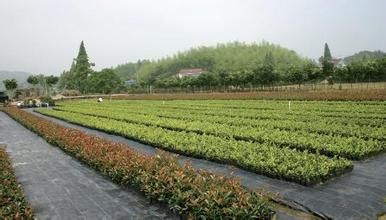
3. Weed Barrier Fabric Usage:
1.Prevent leakage disposal in landfill or waste water or waste dregs disposing field.
2.River bank ,lake dam ,mine remainings ,resevoir ,tunnel ,liquid storage pool(pit ,mine)
3.Preventing leakage in subway ,basement ,tunnel ,hole .
4.Anti-salt leakage in roadbed and other ground sill.
5.The plane direction laying of dam ,the vertical direction laying for ground sill.used in the construction fence and waste material field.
6.Used in ground sill of road ,highway ,railway and waterproof layer of welling clay and wet collapsed loess.
7.Preventing leakage on rooftop.
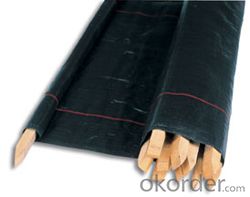
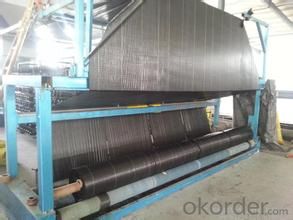
4. FAQ:
Q1: What is your minimum order quantity?
A:The minimum order quantity is 5000 ,but it is negotiable.
Q2:What is your payment terms?
A: T/T,Western Union,Paypal,L/C...
Q3:What is your delivery time?
A:Production time usually costs 2-20 days.
Waiting to cooperate with you!
- Q: How do geotextiles help with soil confinement in erosion control bags?
- Geotextiles play a crucial role in soil confinement within erosion control bags by acting as a barrier that prevents the soil from escaping while allowing water to pass through. They provide structural stability to the bag, preventing it from collapsing or shifting, thereby maintaining the shape and effectiveness of the erosion control structure. Additionally, geotextiles help in distributing the load evenly across the bag, minimizing stress on the soil and enhancing its ability to resist erosion.
- Q: How do geotextiles aid in the reduction of pore water pressure?
- Geotextiles aid in the reduction of pore water pressure by providing a barrier that allows water to flow through while preventing the migration of fine particles. This allows for efficient drainage, preventing the build-up of excess pore water pressure within the soil or ground, ultimately reducing the risk of soil liquefaction or instability.
- Q: How do geotextiles improve the performance of geocells?
- Geotextiles improve the performance of geocells by providing additional strength, stability, and filtration capabilities. They act as a barrier between the soil and the geocell structure, preventing soil erosion and promoting proper drainage. Geotextiles also enhance load distribution and increase the overall structural integrity of the geocell system, making it more effective in various applications such as soil stabilization, erosion control, and slope protection.
- Q: Whether the non-woven geotextile is required for inspection
- It depends on what you are doing, and if the declaration of the project and the like need to be sent to the authority of third-party testing, if only the daily sales and the like as long as the internal testing on the line friends.
- Q: Can geotextiles be used for erosion control in golf courses?
- Yes, geotextiles can be used for erosion control in golf courses. Geotextiles are permeable fabrics that can be installed to stabilize soil and prevent erosion by providing a barrier against water flow. They are commonly used in various landscaping applications, including golf course construction and maintenance, to control erosion and improve soil stability.
- Q: What are the design considerations for geotextile-reinforced soil walls?
- Some of the design considerations for geotextile-reinforced soil walls include the selection of appropriate geotextile material, determining the required strength and stability of the wall, evaluating the site conditions and soil properties, considering the drainage requirements, ensuring proper connection and anchorage of the geotextile to the wall, and considering any potential environmental factors that may affect the performance of the wall.
- Q: Can geotextiles be used for drainage purposes?
- Yes, geotextiles can be used for drainage purposes. They are commonly used to improve soil drainage by allowing water to pass through while preventing soil erosion and clogging.
- Q: How do geotextiles contribute to the safety of transportation infrastructure?
- Geotextiles play a vital role in enhancing the safety of transportation infrastructure by providing reinforcement, filtration, and separation. They help prevent soil erosion and stabilize the ground, reducing the risk of landslides and sinkholes. Geotextiles also assist in controlling water drainage and filtration, preventing waterlogging and increasing the durability of roads and bridges. Overall, geotextiles contribute to the longevity and stability of transportation infrastructure, ensuring safer and more reliable travel for users.
- Q: Thank you, great gods
- Polyester short wire, polyester filament, polypropylene geotextile, filament woven geotextile, and so on. I professional production geotextile geomembrane and other geotechnical materials, a professional construction of the welding team, wish smooth
- Q: What are the physical properties of geotextiles?
- Geotextiles are engineered fabrics that possess various physical properties. They are typically lightweight and flexible, allowing for easy handling and installation. Geotextiles also exhibit high tensile strength, enabling them to withstand stress and strains that occur during construction or erosion control applications. These fabrics are permeable, allowing water and gases to pass through while retaining soil particles. Additionally, geotextiles are resistant to UV degradation, chemicals, and biological degradation, ensuring their durability and longevity in outdoor environments.
Send your message to us
M288 Class 2 Geotextile Silt Fence/Weed Barrier Fabric/Woven Fabric 100gsm
- Loading Port:
- Qingdao
- Payment Terms:
- TT OR LC
- Min Order Qty:
- 5000 roll
- Supply Capability:
- 100000 roll/month
OKorder Service Pledge
OKorder Financial Service
Similar products
Hot products
Hot Searches
Related keywords
